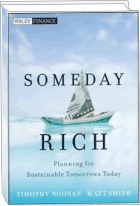
Taking Income, the Russell Way
An entertaining and informative new book, Someday Rich (Wiley, 2012), encapsulates at least six years of thinking about retirement income at Russell Investments. At left, co-author Tim Noonan, a Russell managing director.


